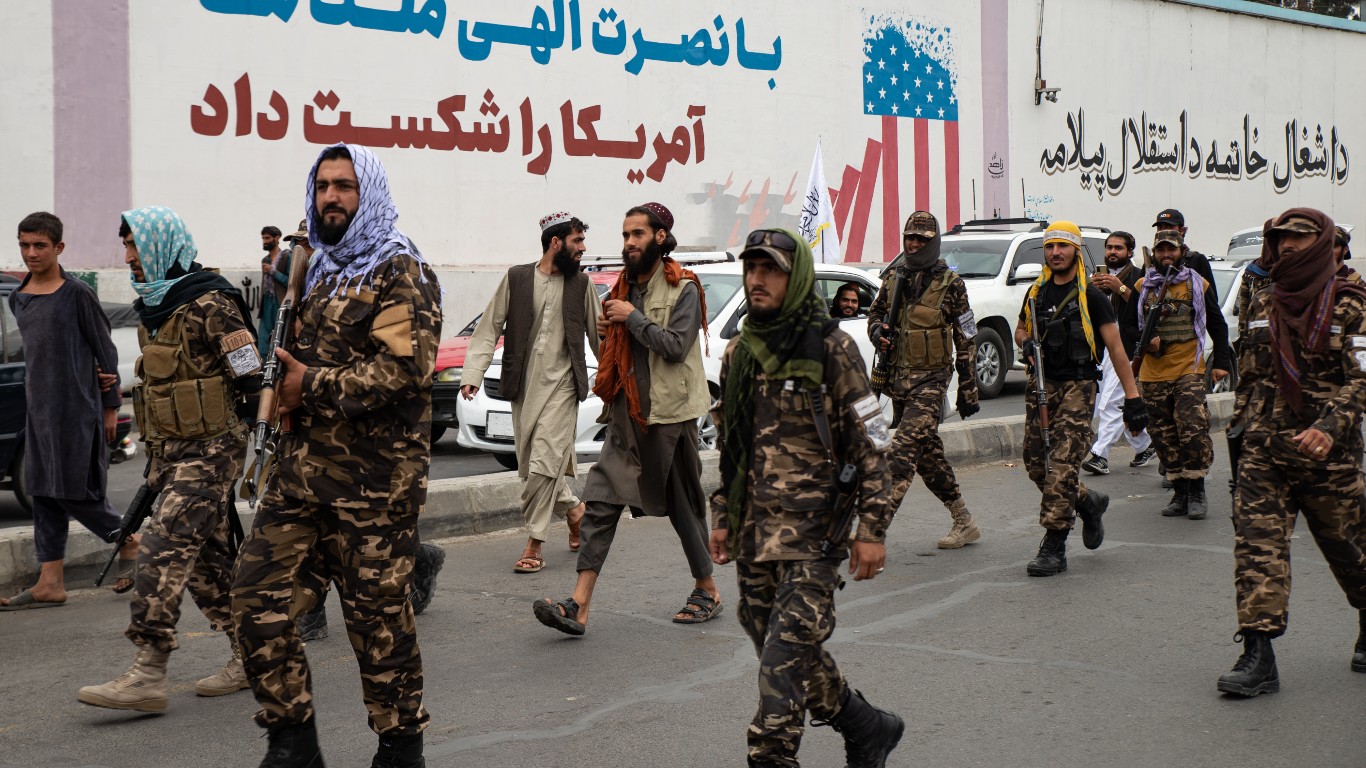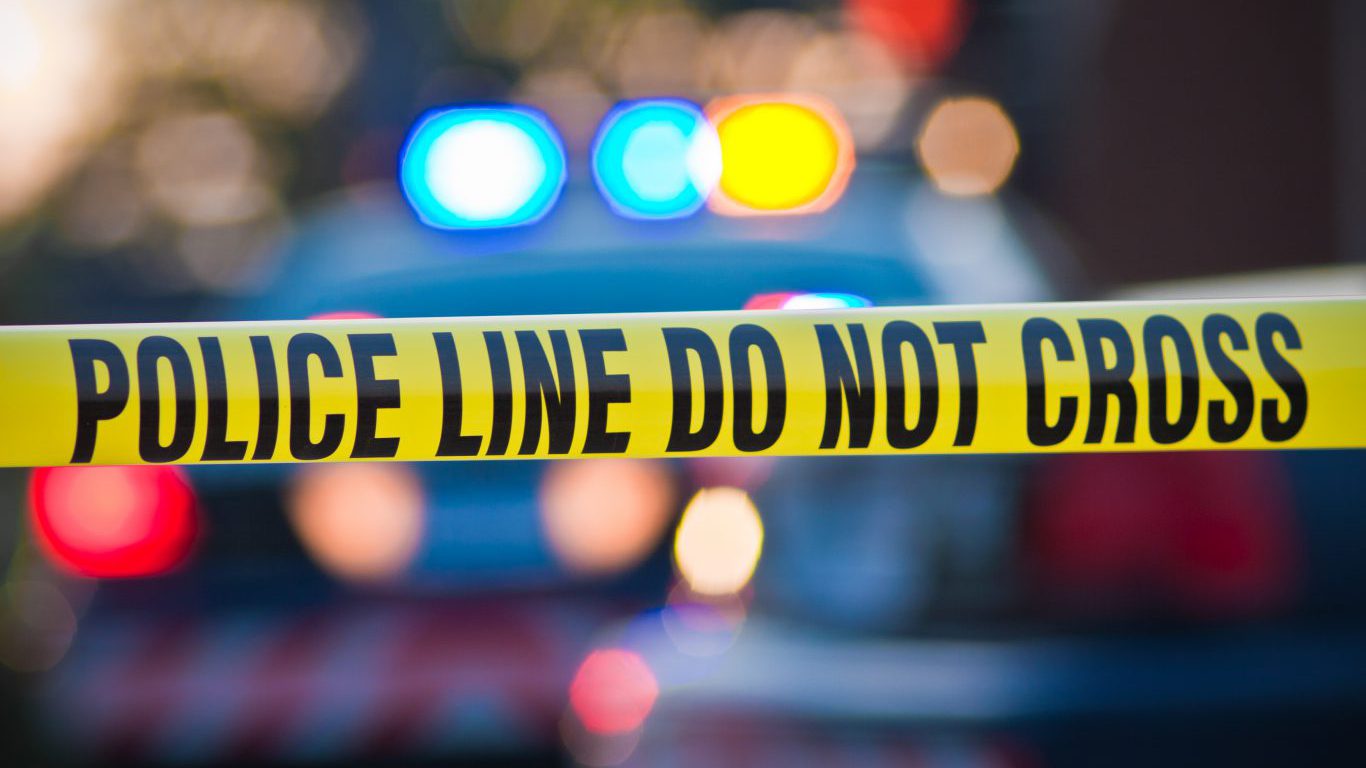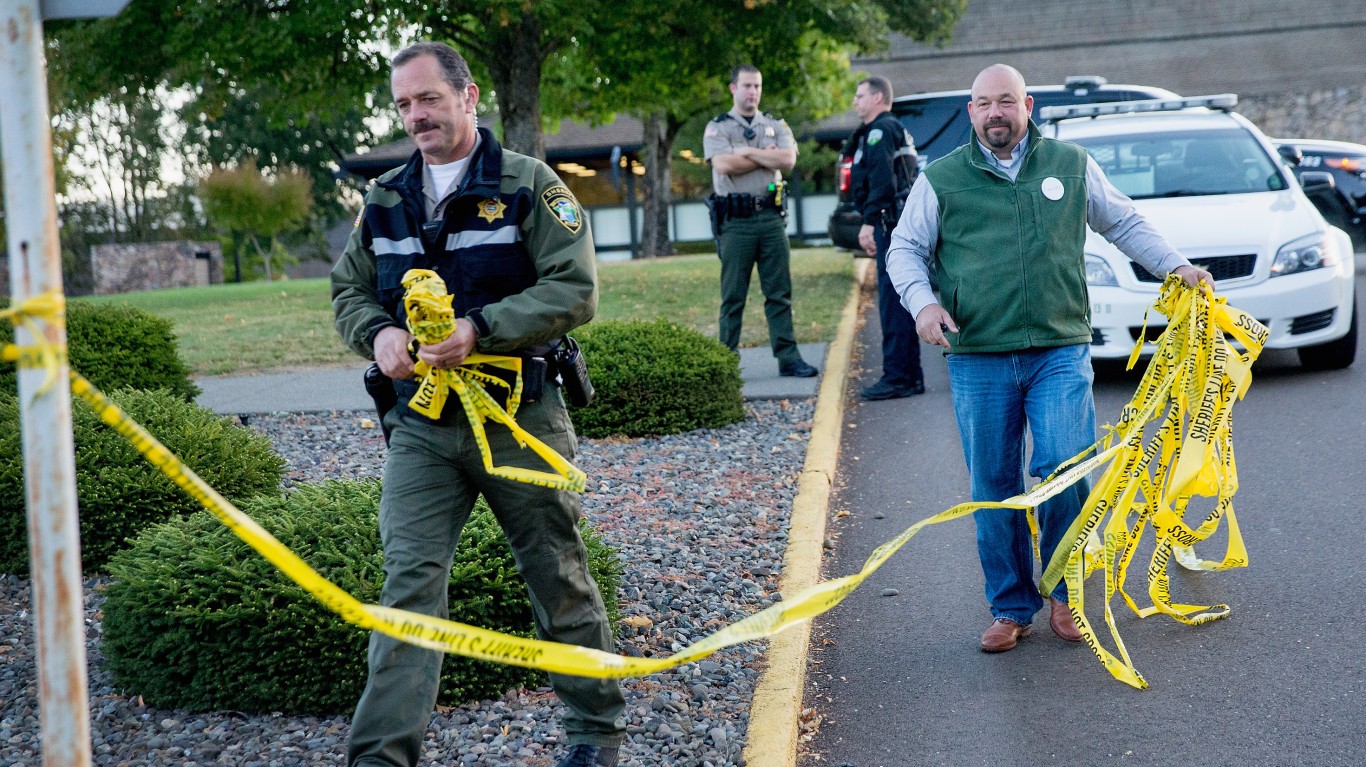
The country’s gun violence problem seems to be getting worse over the years – based on the number of mass shootings, shooting victims, suicides, and casualties. School shootings alone have skyrocketed, reaching a record 302 incidents in 2022, according to the Center for Homeland Defense and Security’s school shooting database. School shooting incidents include any incident where a firearm is brandished or fired at a K-12 school property for any reason at any time of day, regardless of whether there were any shooting victims. Since 2018, there have been at least 114 school shooting incidents each year, an unprecedented rate.
Mass shootings, in which numerous people are murdered by gunfire, occur with such frequency that gun violence with lower numbers of victims can go virtually unnoticed in a society desensitized to its tempo of gun violence. And 2022 is tied with 2018 as the year with the most mass shootings. (Here are the states where gun deaths are increasing fastest.)
Take for instance the May 24, 2022 Robb Elementary school shooting in Uvalde, Texas, that claimed the lives of 19 children and two teachers by an 18-year-old shooter who was fatally shot in a botched police response. That horrendous event took place only 10 days after 10 Black people were gunned down in a Buffalo supermarket by an 18-year old white supremacist who later pled guilty to his crime. Eight days after the Robb Elementary school shooting, a gunman murdered four people at a hospital in Tulsa, Oklahoma, before taking his own life.
To find the number of mass shootings each year since 1982, 24/7 Wall St. referenced liberal news organization Mother Jones’ Mass Shootings study. Mother Jones classifies a mass shooting as a single attack in a public place in which three or more people were killed not including the perpetrator. Prior to 2013, however, Mother Jones included only mass shootings in which four or more victims were killed.
According to the Mother Jones database, these murderous incidents have increased since the 2000s. In that decade, the U.S. recorded 20 mass shootings that killed 171 and injured 130 people.
In the 2010s, there were 66 mass shootings in the U.S., with 539 people killed and more than a 1,000 injured, a casualty rate boosted by the Oct. 1, 2017, Las Vegas massacre committed by a 64-year-old man who opened fire on country music festival-goers before taking his own life. It is important to remember, however, that the definition of mass shootings in the Mother Jones database was changed in 2013 to three or more people killed and therefore comparisons should account for this.
While Mother Jones defines a mass shooting as any gun violence in which at least three people are killed not including the perpetrator, there is no agreed-upon single definition of what constitutes a mass shooting, which can explain why estimates can vary so much from source to source.
In 2013, Congress and President Barack Obama amended a federal code to define a “mass killing” to mean three or more killings in a single incident. The FBI has no definition for mass shootings, per se, but considers a “mass murder” to be any homicidal attack in which four or more victims are killed. Other definitions may include injured persons, explaining the large variation between sources. Other sources may also not differentiate between crime-related shootings with multiple victims and those we tend to associate more with mass shootings. (Here are the most common gun-related crimes in each state.)
U.S. mass shootings every year since 1982.
Click here to see our detailed methodology.
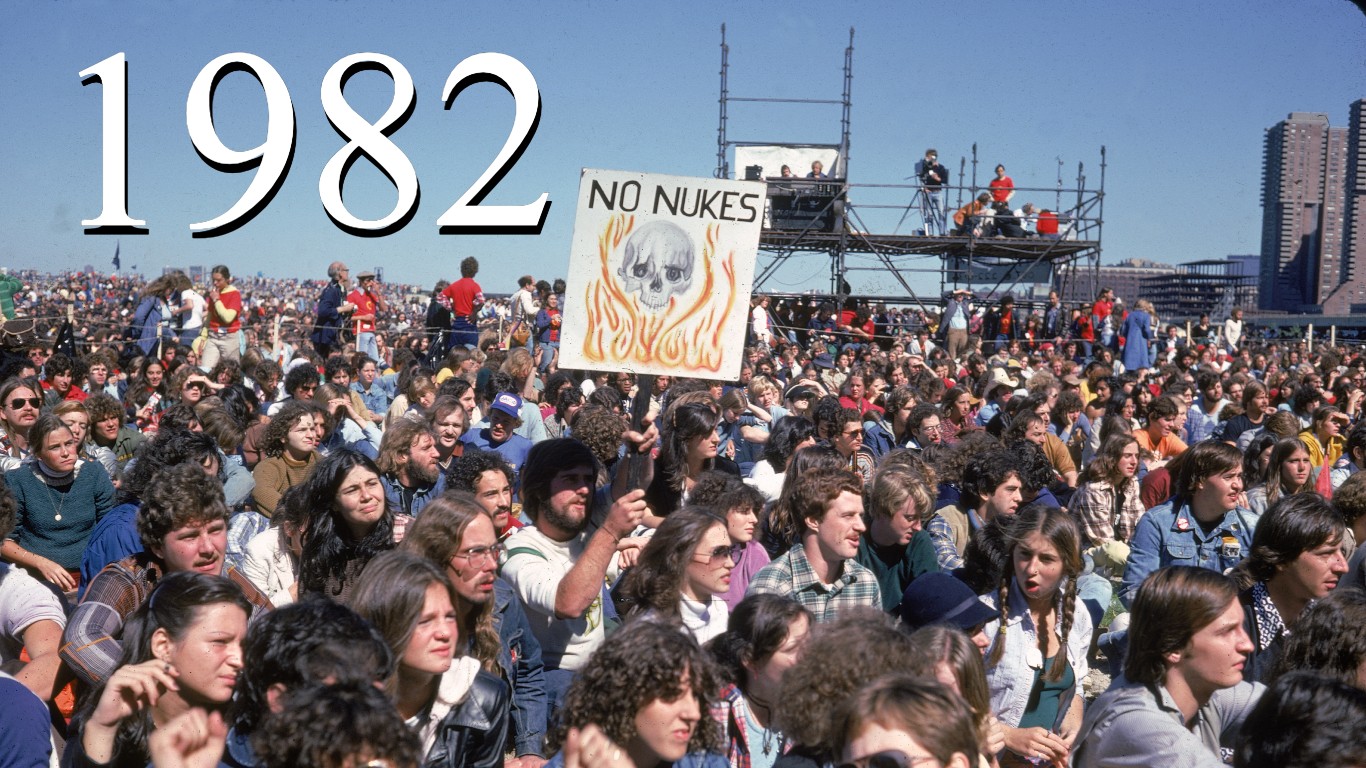
1982
> Mass shootings (4+ victims killed): 1
> Mass shootings victims: 11 (8 deaths, 3 injuries)
> School shootings: 18
> National average of gun owners: 45% est.
[in-text-ad]

1983
> Mass shootings (4+ victims killed): 0
> Mass shootings victims: N/A
> School shootings: 25
> National average of gun owners: 45% est.

1984
> Mass shootings (4+ victims killed): 2
> Mass shootings victims: 48 (28 deaths, 20 injuries)
> School shootings: 25
> National average of gun owners: 45% est.

1985
> Mass shootings (4+ victims killed): 0
> Mass shootings victims: N/A
> School shootings: 20
> National average of gun owners: 44%
[in-text-ad-2]

1986
> Mass shootings (4+ victims killed): 1
> Mass shootings victims: 21 (15 deaths, 6 injuries)
> School shootings: 16
> National average of gun owners: 44% est.
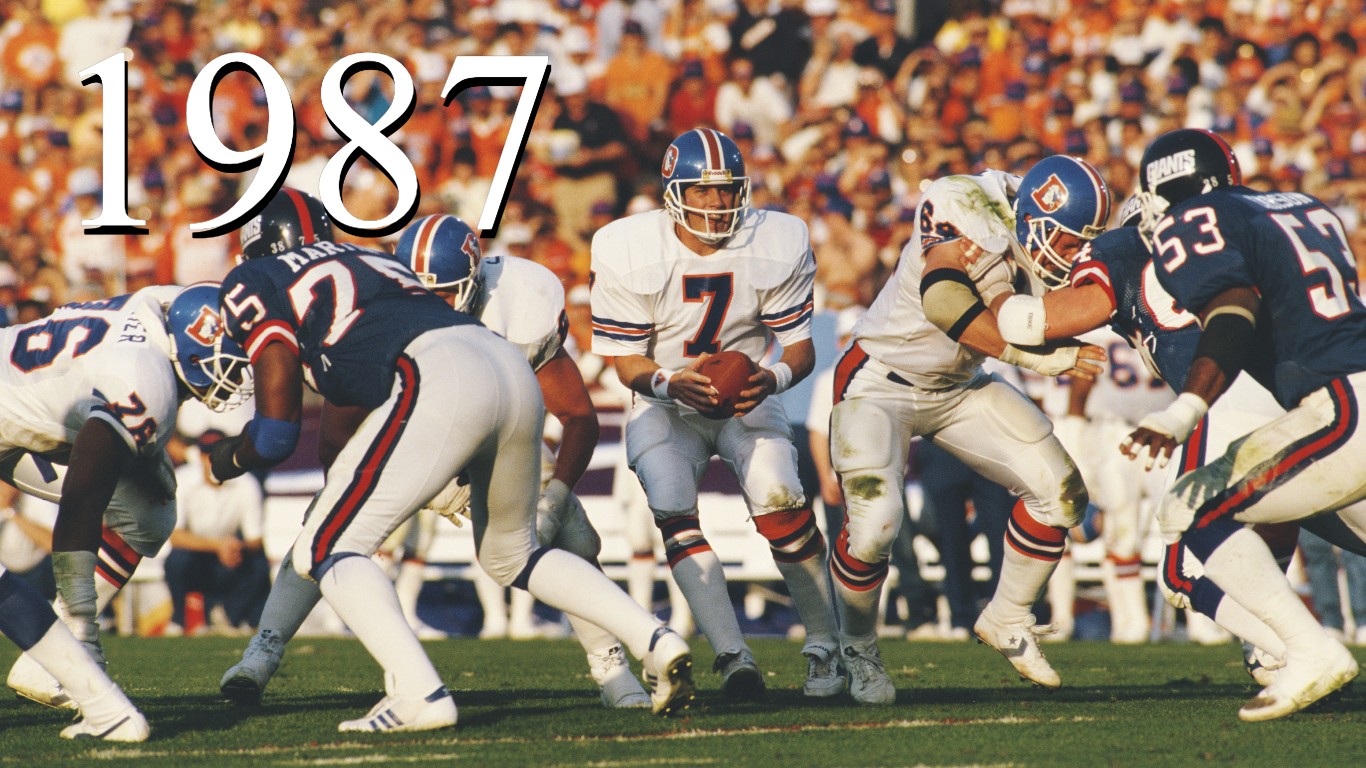
1987
> Mass shootings (4+ victims killed): 1
> Mass shootings victims: 20 (6 deaths, 14 injuries)
> School shootings: 25
> National average of gun owners: 44% est.
[in-text-ad]

1988
> Mass shootings (4+ victims killed): 1
> Mass shootings victims: 11 (7 deaths, 4 injuries)
> School shootings: 38
> National average of gun owners: 44% est.

1989
> Mass shootings (4+ victims killed): 2
> Mass shootings victims: 56 (15 deaths, 41 injuries)
> School shootings: 19
> National average of gun owners: 44% est.

1990
> Mass shootings (4+ victims killed): 1
> Mass shootings victims: 14 (10 deaths, 4 injuries)
> School shootings: 18
> National average of gun owners: 47%
[in-text-ad-2]
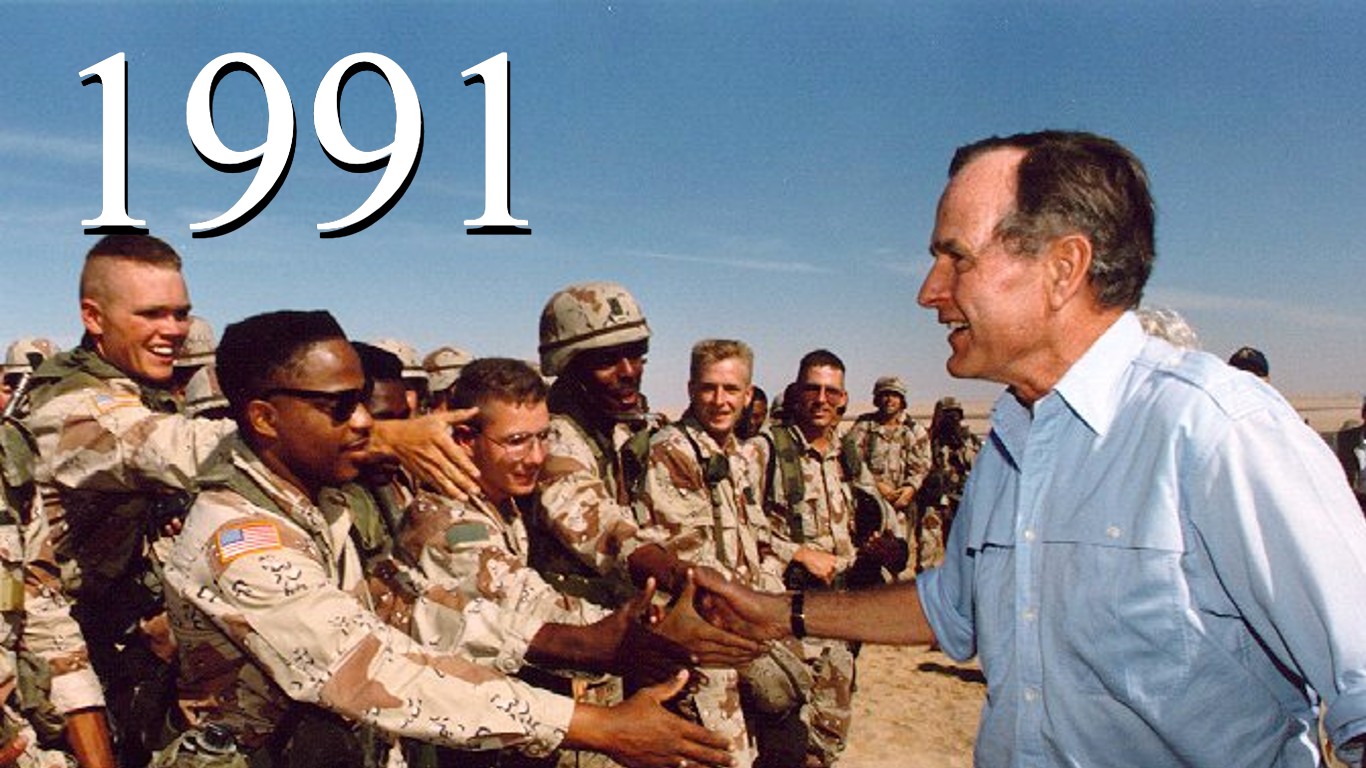
1991
> Mass shootings (4+ victims killed): 3
> Mass shootings victims: 61 (35 deaths, 26 injuries)
> School shootings: 32
> National average of gun owners: 47% est.

1992
> Mass shootings (4+ victims killed): 2
> Mass shootings victims: 19 (9 deaths, 10 injuries)
> School shootings: 33
> National average of gun owners: 47% est.
[in-text-ad]
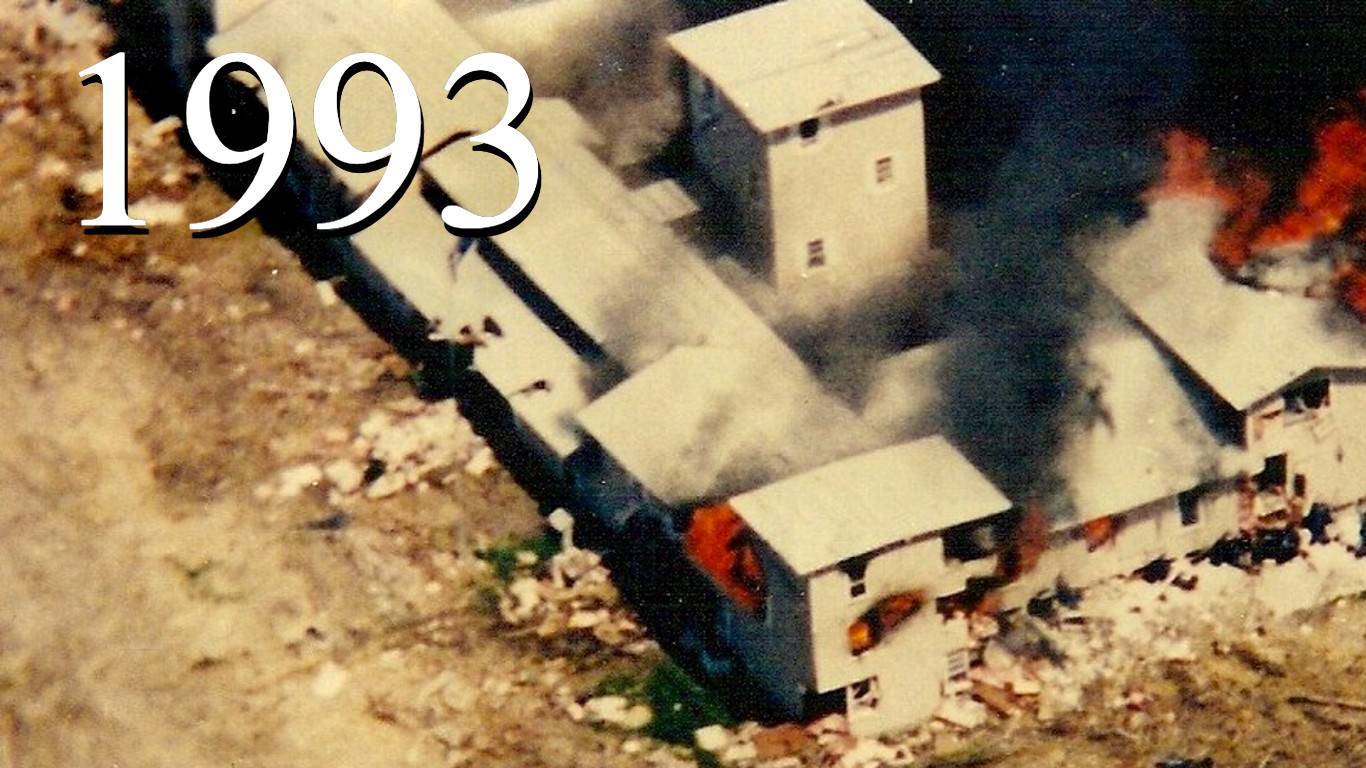
1993
> Mass shootings (4+ victims killed): 4
> Mass shootings victims: 57 (23 deaths, 34 injuries)
> School shootings: 47
> National average of gun owners: 47% est.

1994
> Mass shootings (4+ victims killed): 1
> Mass shootings victims: 28 (5 deaths, 23 injuries)
> School shootings: 40
> National average of gun owners: 47% est.

1995
> Mass shootings (4+ victims killed): 1
> Mass shootings victims: 6 (6 deaths, 0 injuries)
> School shootings: 22
> National average of gun owners: 47% est.
[in-text-ad-2]

1996
> Mass shootings (4+ victims killed): 1
> Mass shootings victims: 7 (6 deaths, 1 injuries)
> School shootings: 21
> National average of gun owners: 44%

1997
> Mass shootings (4+ victims killed): 2
> Mass shootings victims: 14 (9 deaths, 5 injuries)
> School shootings: 26
> National average of gun owners: 44% est.
[in-text-ad]

1998
> Mass shootings (4+ victims killed): 3
> Mass shootings victims: 50 (14 deaths, 36 injuries)
> School shootings: 29
> National average of gun owners: 44% est.

1999
> Mass shootings (4+ victims killed): 5
> Mass shootings victims: 89 (42 deaths, 47 injuries)
> School shootings: 22
> National average of gun owners: 44% est.

2000
> Mass shootings (4+ victims killed): 1
> Mass shootings victims: 7 (7 deaths, 0 injuries)
> School shootings: 29
> National average of gun owners: 39%
[in-text-ad-2]
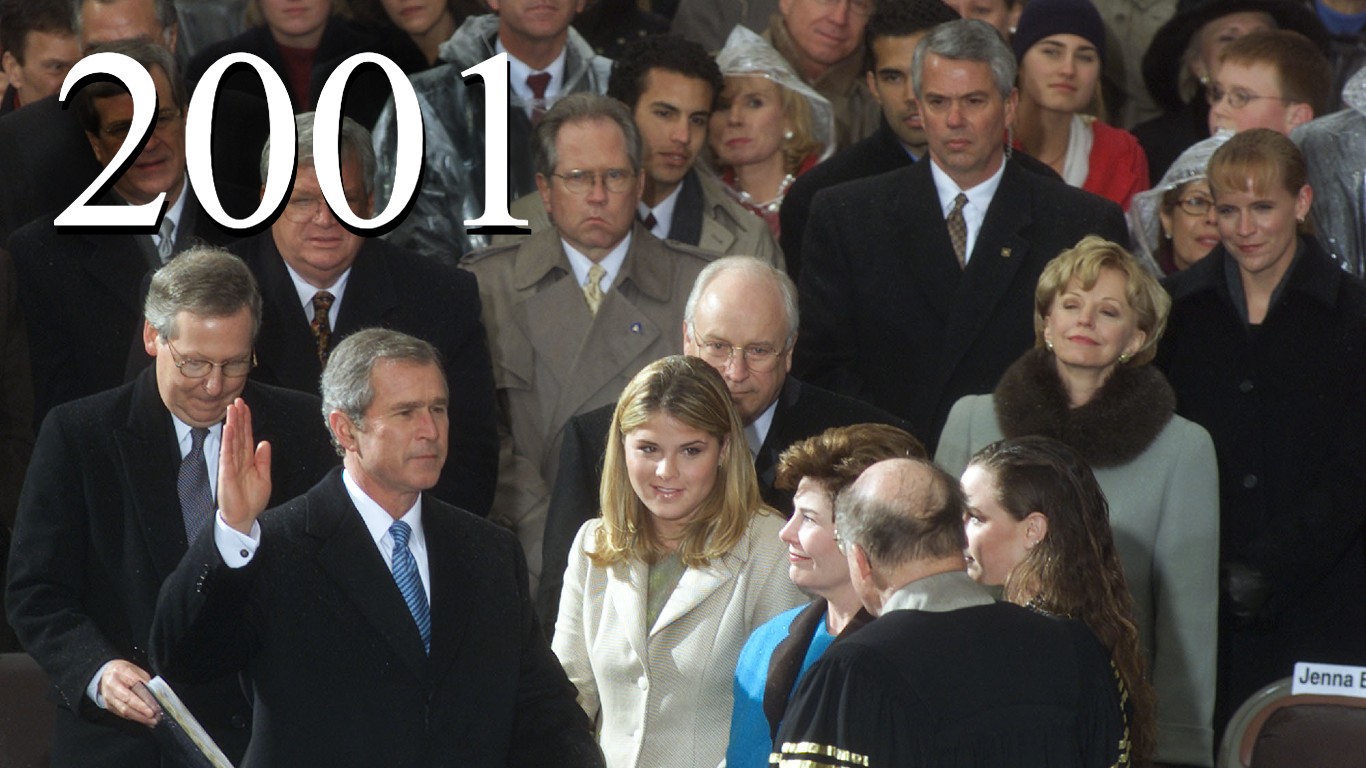
2001
> Mass shootings (4+ victims killed): 1
> Mass shootings victims: 9 (5 deaths, 4 injuries)
> School shootings: 25
> National average of gun owners: 40%

2002
> Mass shootings (4+ victims killed): 0
> Mass shootings victims: N/A
> School shootings: 19
> National average of gun owners: 41%
[in-text-ad]

2003
> Mass shootings (4+ victims killed): 1
> Mass shootings victims: 15 (7 deaths, 8 injuries)
> School shootings: 32
> National average of gun owners: 43%

2004
> Mass shootings (4+ victims killed): 1
> Mass shootings victims: 12 (5 deaths, 7 injuries)
> School shootings: 35
> National average of gun owners: 38%
2005
> Mass shootings (4+ victims killed): 2
> Mass shootings victims: 26 (17 deaths, 9 injuries)
> School shootings: 47
> National average of gun owners: 40%
[in-text-ad-2]

2006
> Mass shootings (4+ victims killed): 3
> Mass shootings victims: 28 (21 deaths, 7 injuries)
> School shootings: 59
> National average of gun owners: 43%

2007
> Mass shootings (4+ victims killed): 4
> Mass shootings victims: 85 (53 deaths, 32 injuries)
> School shootings: 44
> National average of gun owners: 42%
[in-text-ad]
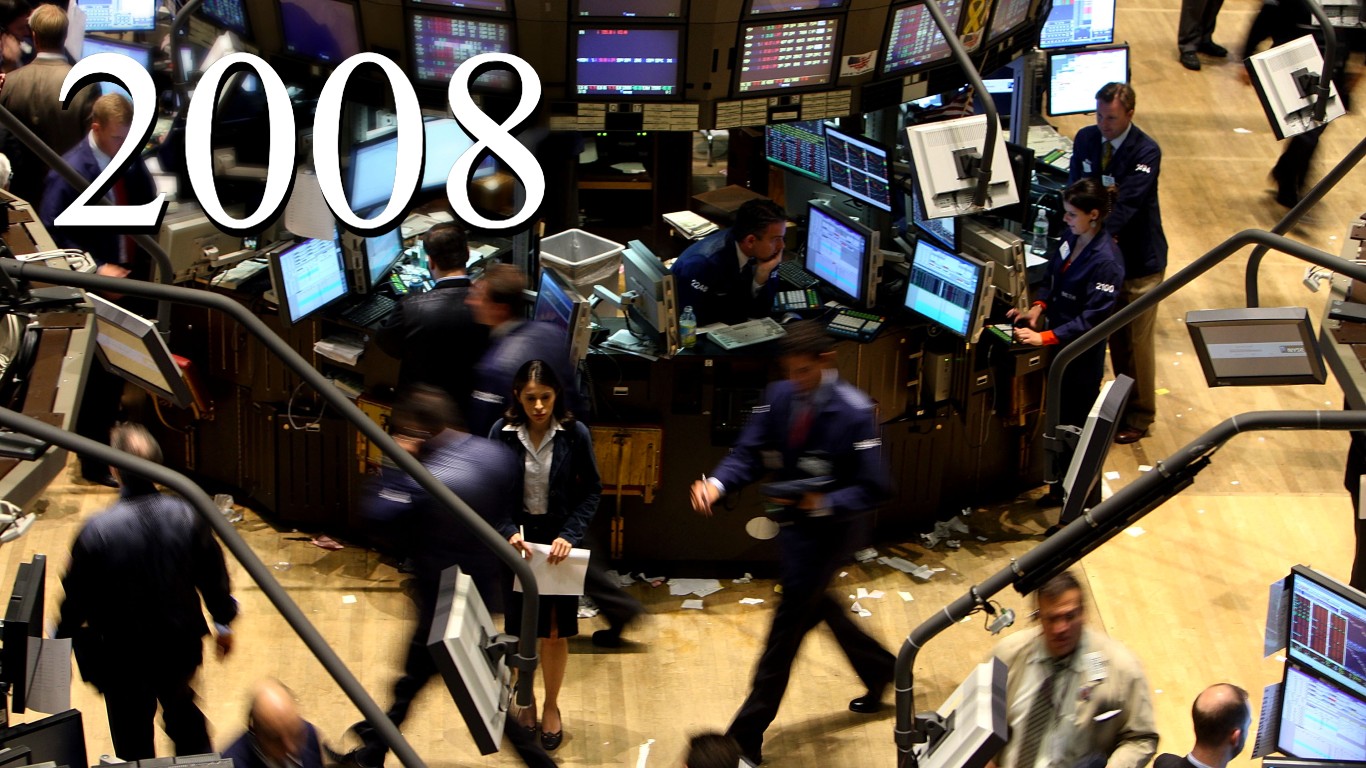
2008
> Mass shootings (4+ victims killed): 3
> Mass shootings victims: 41 (17 deaths, 24 injuries)
> School shootings: 35
> National average of gun owners: 42%

2009
> Mass shootings (4+ victims killed): 4
> Mass shootings victims: 78 (39 deaths, 39 injuries)
> School shootings: 31
> National average of gun owners: 40%

2010
> Mass shootings (4+ victims killed): 1
> Mass shootings victims: 11 (9 deaths, 2 injuries)
> School shootings: 15
> National average of gun owners: 39%
[in-text-ad-2]

2011
> Mass shootings (4+ victims killed): 3
> Mass shootings victims: 40 (19 deaths, 21 injuries)
> School shootings: 16
> National average of gun owners: 45%

2012
> Mass shootings (4+ victims killed): 7
> Mass shootings victims: 151 (71 deaths, 80 injuries)
> School shootings: 20
> National average of gun owners: 43%
[in-text-ad]

2013
> Mass shootings (3+ victims killed): 5
> Mass shootings victims: 48 (35 deaths, 13 injuries)
> School shootings: 34
> National average of gun owners: 37%
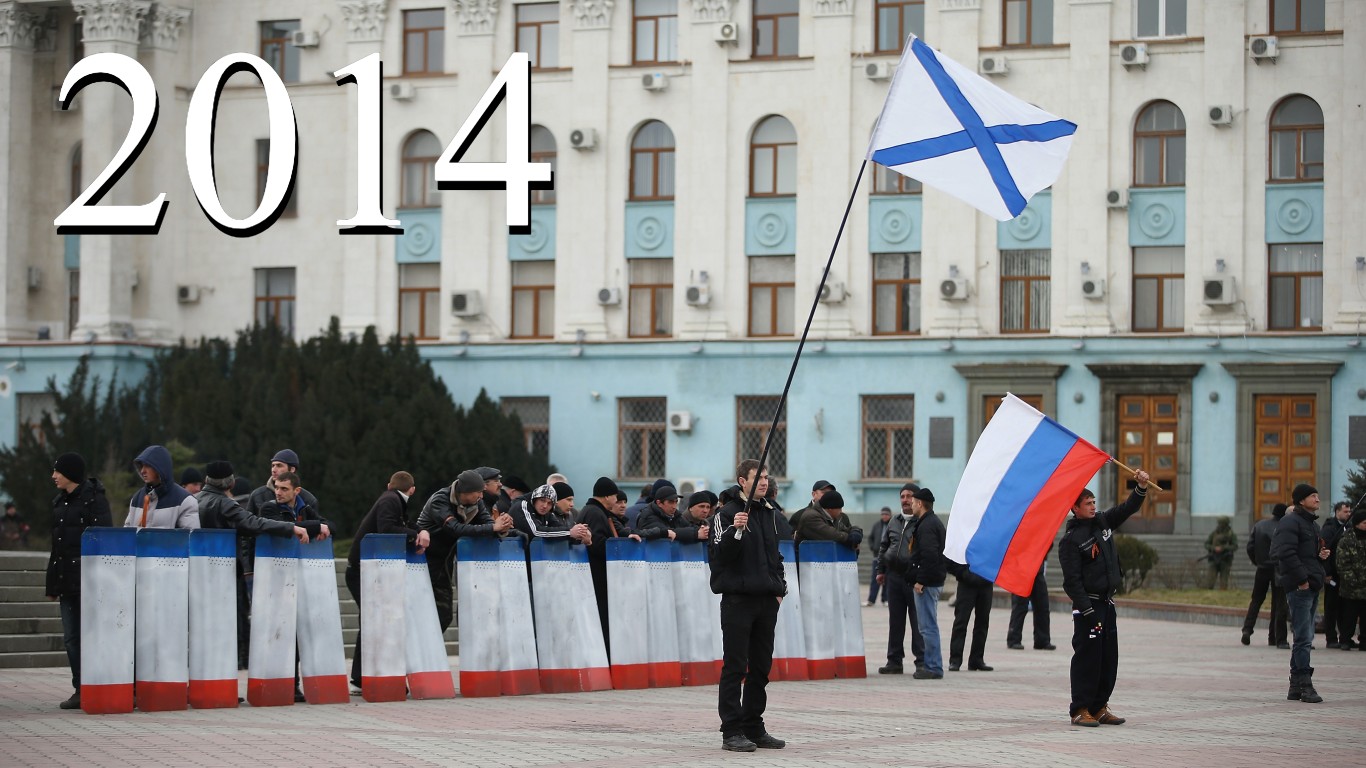
2014
> Mass shootings (3+ victims killed): 4
> Mass shootings victims: 46 (18 deaths, 28 injuries)
> School shootings: 46
> National average of gun owners: 42%

2015
> Mass shootings (3+ victims killed): 7
> Mass shootings victims: 89 (46 deaths, 43 injuries)
> School shootings: 40
> National average of gun owners: 41%
[in-text-ad-2]

2016
> Mass shootings (3+ victims killed): 6
> Mass shootings victims: 154 (71 deaths, 83 injuries)
> School shootings: 50
> National average of gun owners: 39%

2017
> Mass shootings (3+ victims killed): 11
> Mass shootings victims: 704 (117 deaths, 587 injuries)
> School shootings: 58
> National average of gun owners: 42%
[in-text-ad]
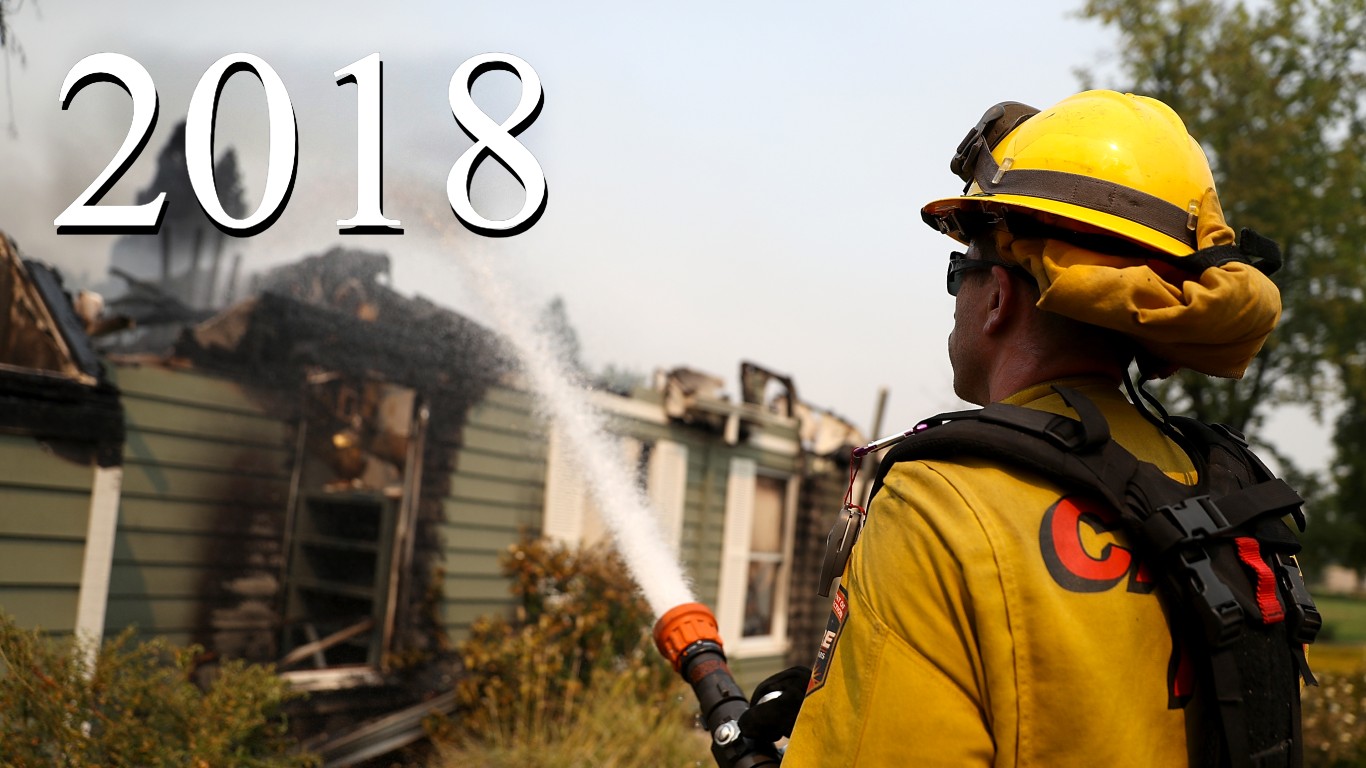
2018
> Mass shootings (3+ victims killed): 12
> Mass shootings victims: 150 (80 deaths, 70 injuries)
> School shootings: 119
> National average of gun owners: 43%

2019
> Mass shootings (3+ victims killed): 10
> Mass shootings victims: 185 (73 deaths, 112 injuries)
> School shootings: 119
> National average of gun owners: 37%
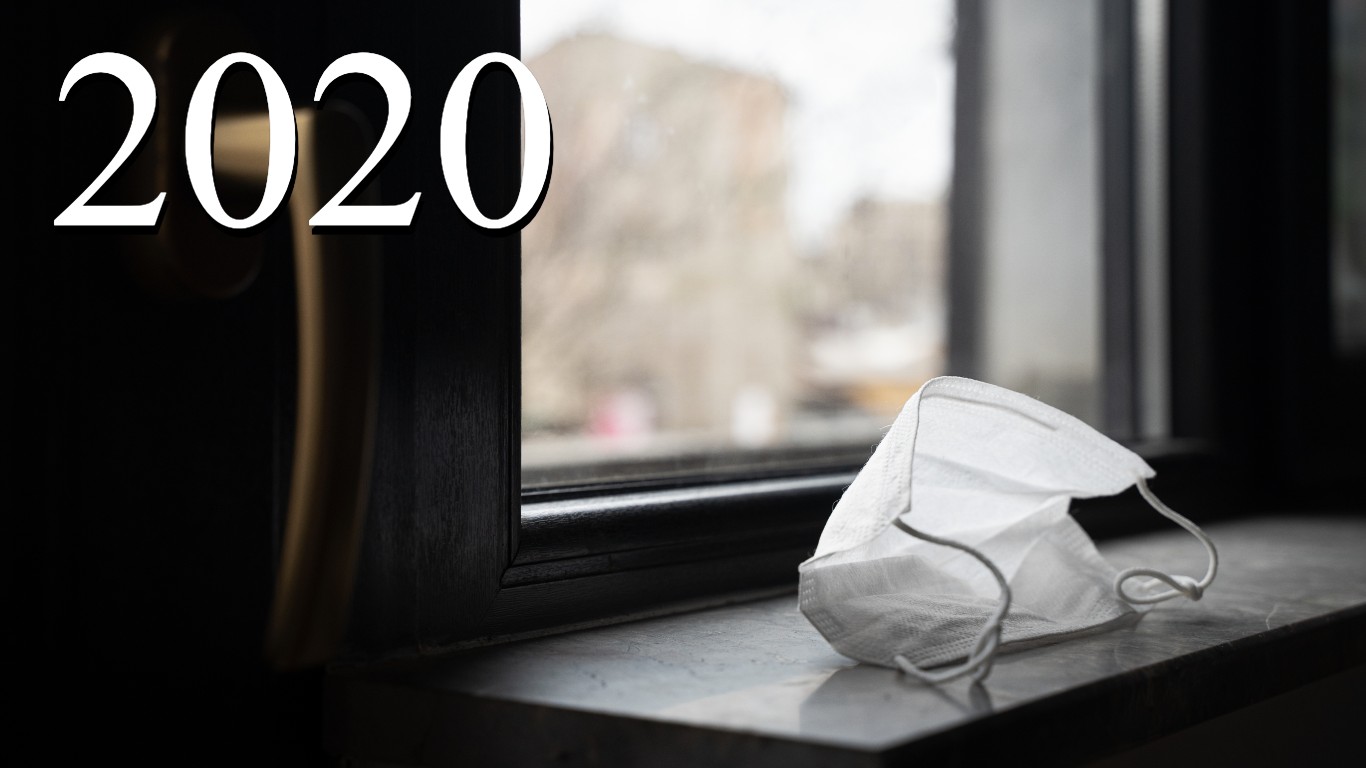
2020
> Mass shootings (3+ victims killed): 2
> Mass shootings victims: 9 (9 deaths, 0 injuries)
> School shootings: 114
> National average of gun owners: 42%
[in-text-ad-2]

2021
> Mass shootings (3+ victims killed): 6
> Mass shootings victims: 59 (43 deaths, 16 injuries)
> School shootings: 250
> National average of gun owners: 42%
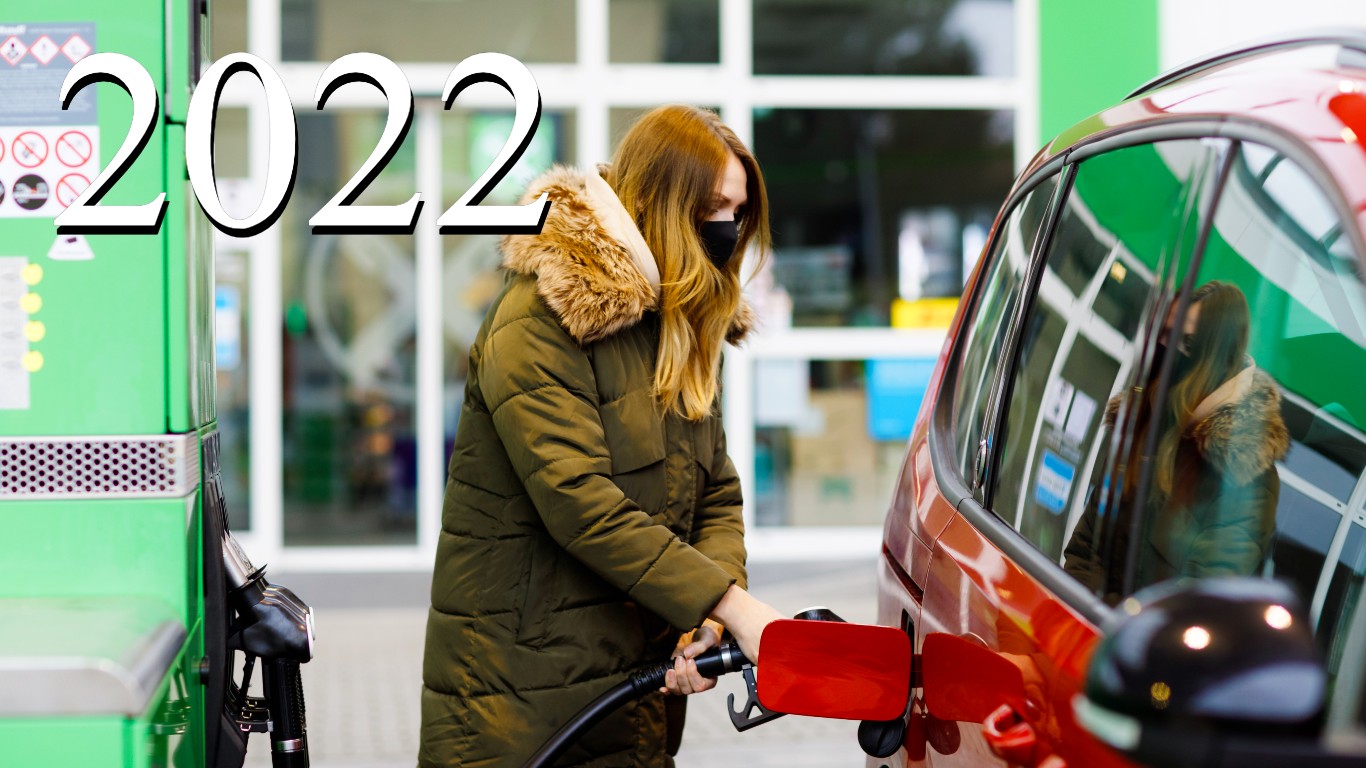
2022
> Mass shootings (3+ victims killed): 12
> Mass shootings victims: 174 (74 deaths, 104 injuries)
> School shootings: 302
> National average of gun owners: 45%
Methodology
To find the number of mass shootings each year since 1982, 24/7 Wall St. referenced the Mother Jones’ mass shooting study. Mother Jones classifies a “mass shooting” as an event in which three or more deaths occur. We added the number of school shootings each year from the Center for Homeland Defense and Security’s school shooting database. School shootings are defined as any incident where a firearm is brandished, fired, or when a bullet hits K-12 school property for any reason at any time of day, regardless of whether there were any shooting victims.
Gun ownership stats came from historical Gallup polls, representing the percentages of respondents who said yes to the question: “Do you have a gun in your home?” Prior to the year 2000, the poll was not conducted every year. In the cases where Gallup gun ownership data was not available for a particular year, the most recent poll results were used. In years when Gallup conducted the same poll more than once, the latest poll for that year was used.
It’s Your Money, Your Future—Own It (sponsor)
Retirement can be daunting, but it doesn’t need to be.
Imagine having an expert in your corner to help you with your financial goals. Someone to help you determine if you’re ahead, behind, or right on track. With SmartAsset, that’s not just a dream—it’s reality. This free tool connects you with pre-screened financial advisors who work in your best interests. It’s quick, it’s easy, so take the leap today and start planning smarter!
Don’t waste another minute; get started right here and help your retirement dreams become a retirement reality.
Thank you for reading! Have some feedback for us?
Contact the 24/7 Wall St. editorial team.
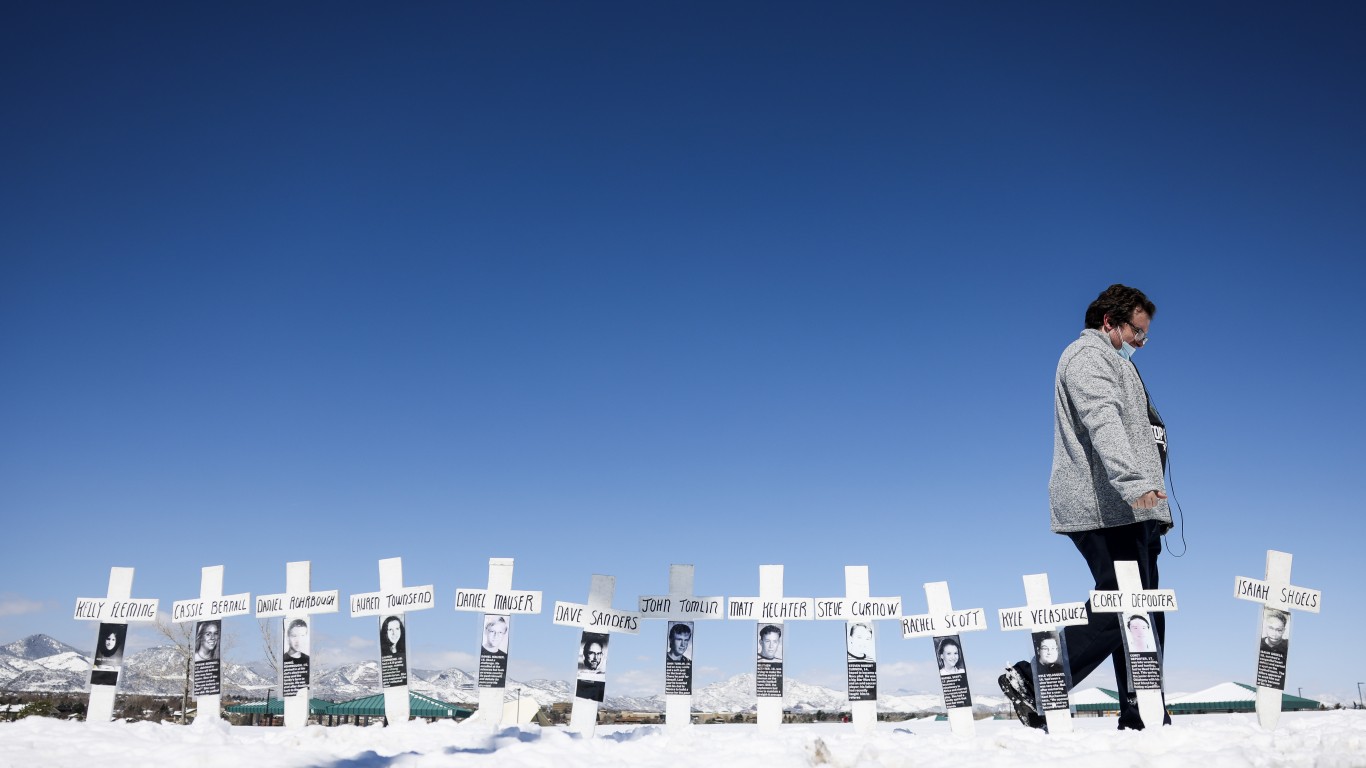 24/7 Wall St.
24/7 Wall St.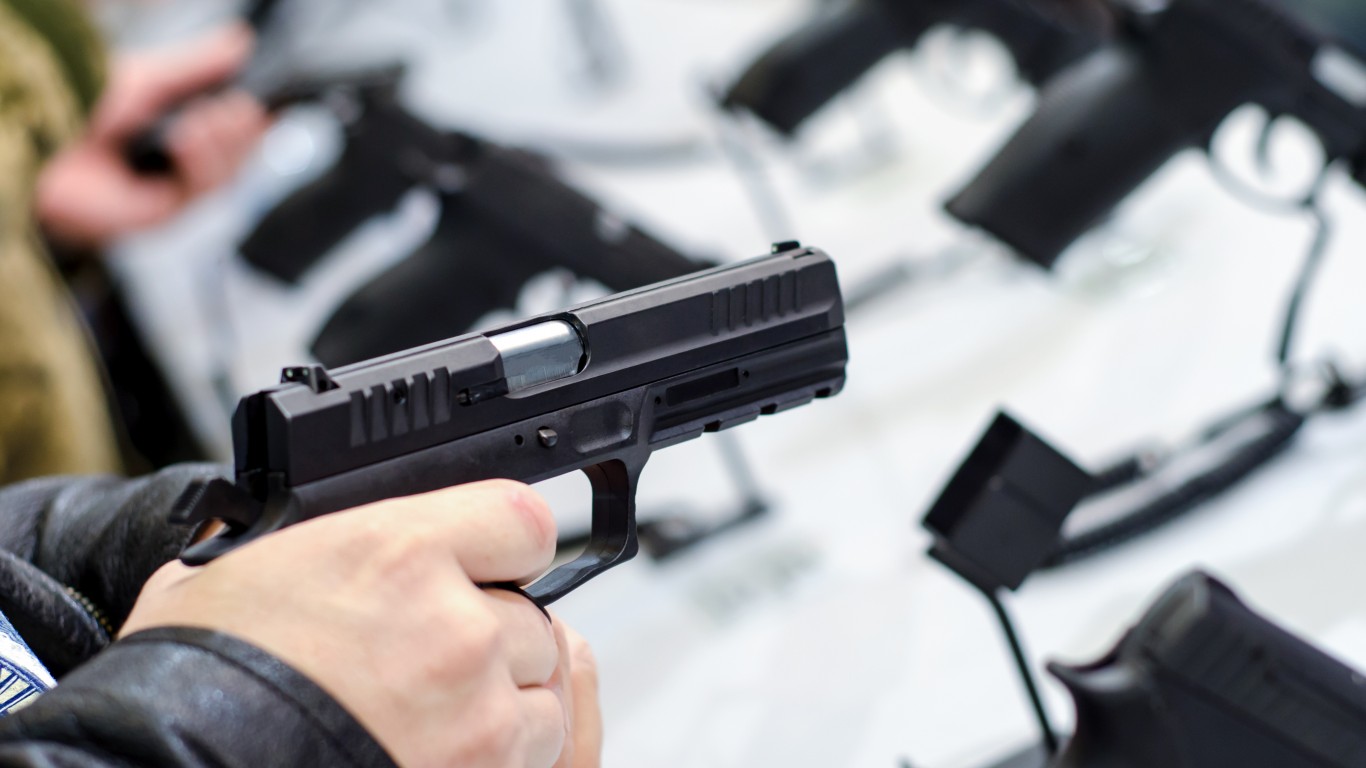 24/7 Wall St.
24/7 Wall St.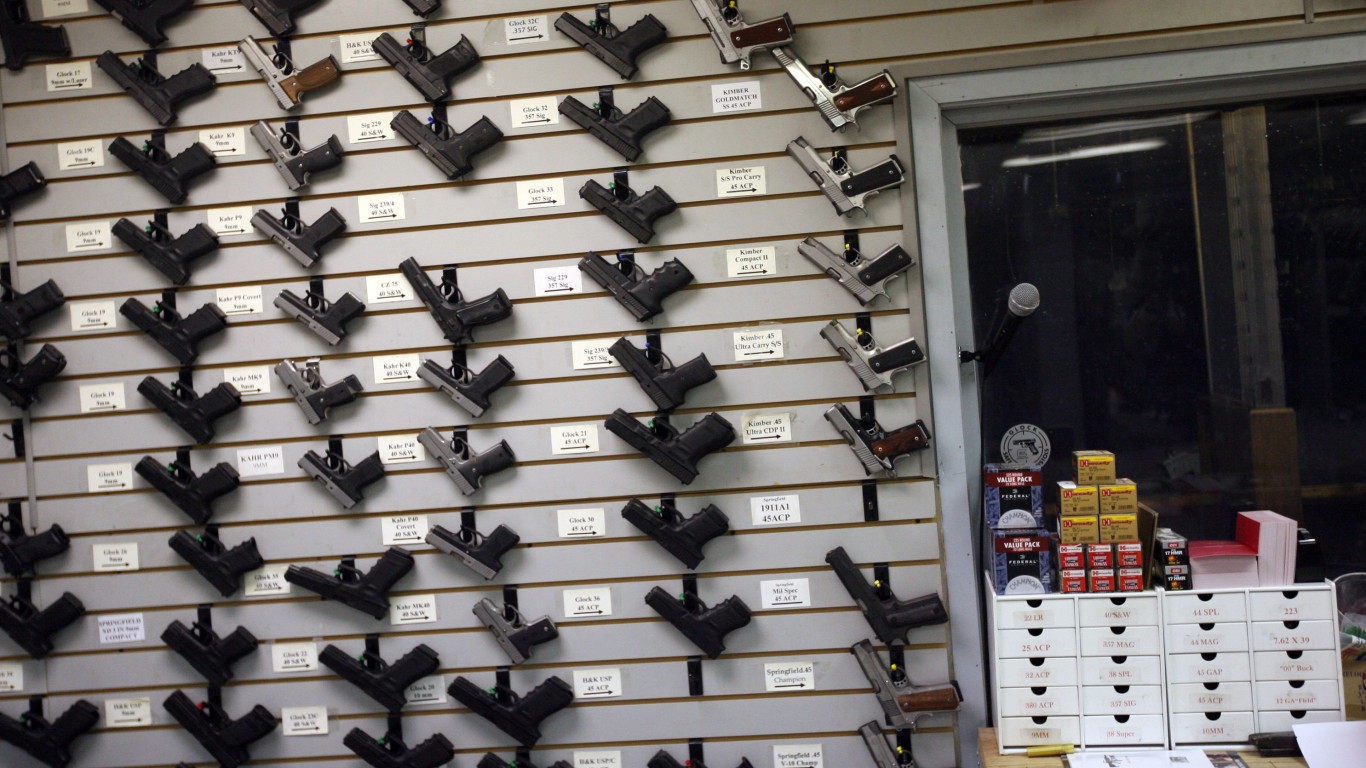 24/7 Wall St.
24/7 Wall St.

